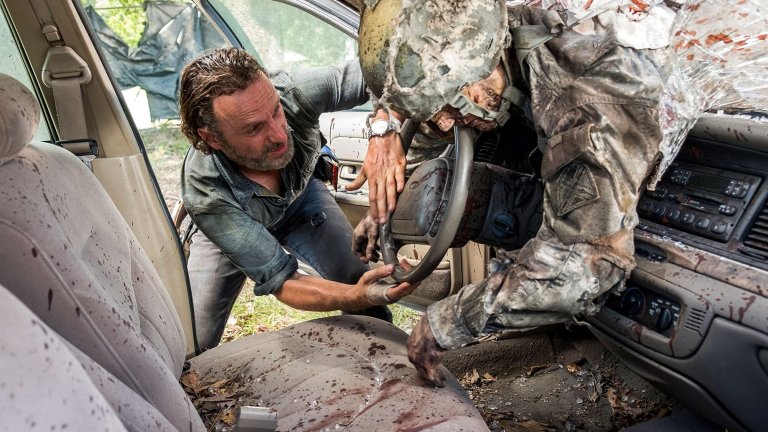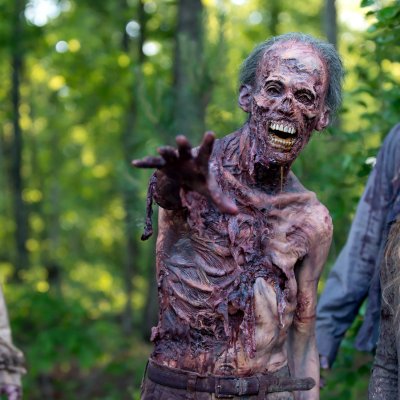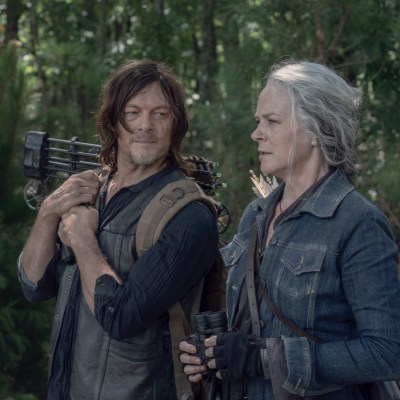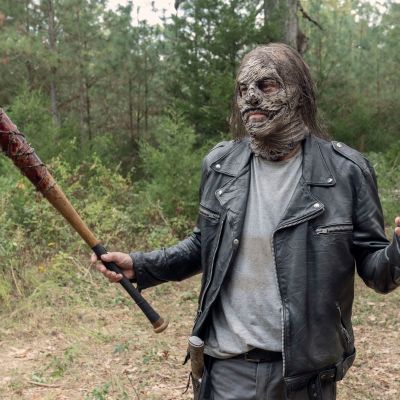The Walking Dead: Why The Military Failed To Stop The Zombie Apocalypse
In The Walking Dead's universe, the most powerful military in the history of militaries fails to contain the walker threat. How is it possible that the United States fell to the hungry dead?

For the 2020 fiscal year, the Department of Defense has been given a budget of approximately $721.5 billion dollars. Were that budget converted to GDP, the U.S. military would fall between the Netherlands ($821.5 billion) and Saudi Arabia ($686.7 billion) in the world ranking, good for 19th place. That’s a lot of money, and it powers one of the most impressive war machines in the history of the world. So how did the most powerful military on Earth fail to stop a bunch of brainless, hungry, rotting corpses on The Walking Dead? It’s an issue of supply and demand.
Gimme fuel, gimme fire
According to military leader Frederick II of Prussia, “An army, like a serpent, goes on its belly.” According to Napoleon I of France, the two things a soldier needs are, “a full belly and a good pair of shoes.” As seen in the prison battle between Rick and the Governor in season four, one tank can topple even the most heavily defended fortress, and that was an M60 Patton tank taken out of active service in 1991. A modern main battle tank, like the M1A1, can do a number on a horde of zombies, but at a significant cost.
The M1A1 Abrams tank carries 40 rounds of ammunition for its 120 millimeter Rheinmetall RH-120 main gun (ideally the M1028 anti-personnel round loaded with 1098 9.5mm tungsten balls), 900 rounds for the .50 caliber Browning M2HB machine gun, and 10,400 rounds for two 7.62 Barrett M240 machine guns. Seems like a lot, right? The M1 Abrams can safely fire its 17 ready rounds in under a minute, after which the crew will need to pull shells out of storage and reload the ready rack or directly reload the main gun; that piece will go silent after two minutes of firing time, not counting reload. The .50 caliber commander’s gun can fire up to 1300 rounds in a minute, giving it a minute or so of bark. The M240 fires anywhere between 650 and 950 a minute, meaning those will be the last guns to go silent on board the Abrams tank, long after all of the other munitions have been exhausted. Using the lower estimate, the two machine guns on the loader’s hatch and mounted coaxial to the main gun could fire for up to 8 minutes (or 5:30 at the higher rate), assuming no jams and the barrels didn’t melt down due to the heat.
If there were no wasted rounds, and if every round scored a direct hit, one tank could stop 43,920 zombies with its main gun, 900 zombies with the Ma Deuce, and 10,400 zombies with its M240s. One tank, 55,220 dead. Impressive! But the population of New York City is 8.4 million, which means you’d need at least 153 tanks to hit every single shot, and have every shotgun round from the main gun kill with every single ball in its round to stop one city of zombies. That’s impossible accuracy on the training ground, let alone in a real-world scenario against moving targets who’ll only drop if hit directly in the head; no amount of center mass will effectively kill a walker. Even a severed head will still bite, and can still kill.
For all the killing power of the modern military, it’s resource intensive. Jet fuel doesn’t grow on trees. It doesn’t matter how many tanks a commander has at their disposal if a $8.5 million dollar nigh-indestructible war machine is grounded for want of a $20 circuit board or $5 military-grade washer. A fleet of Top Gun pilots and fighter jets is next to useless if a lack of $5,000 tires keeps them gathering dust on the runway.
As the COVID-19 pandemic has revealed, the first thing to fall apart in any disaster is the supply chain. There’s no real reason to expect the military supply chain, which is rigidly specialized, is any more durable. Certainly, the military has a stockpile of supplies greater than the average person, but when one supplier in Florida, Saint Mark’s Powder, makes 95% of the propellant used by the military small arms rounds, that’s not a difficult thing to disrupt. One outbreak in the propellant-making factory, and bullets become scarce immediately.
Stand by your man
Greek philosopher Heraclitus said of war, “Out of every one hundred men, ten shouldn’t even be there, eighty are just targets, nine are the real fighters, and we are lucky to have them, for they make the battle. Ah, but the one, one is a warrior, and he will bring the others back.”
The actual numbers are classified, for obvious reasons, but the United States has about 2.2 million service members spread across the Army, Navy, Air Force, Marine Corps, and Coast Guard, plus the Space Force, Merchant Marines, and all sundry National Guard and Reserve units. That’s a lot of people, but not a lot considering most of those members of the military have never seen active combat, let alone fired weapons at anything other than targets. Thus, the tooth-to-tail ratio.
The tooth-to-tail ratio is military jargon for the amount of combat troops (teeth) versus the amount of support personnel (tail). The U.S. military’s current ratio is estimated at about 17 percent, meaning that for every combat troop deployed, there are at least 5 or 6 support personnel there to support that person’s mission. Of that percentage of active duty combat personnel, how many of them are infantry or experienced ground fighters?
There’s a place in the modern military for fighter jets and battleships, but if you take an Air Force pilot out of the seat of an F-35 and give them a gun, their advantage over a normal person is minimal when compared to the difference between a Marine Corps rifleman with years of combat experience in Iraq and Joe Six Pack. You wouldn’t want an avid hunter trying to fly a helicopter, and you wouldn’t want a helicopter pilot to try to bring down a deer for dinner, except from 500 feet in the air. All members of the military go through basic training, and all are familiar enough with guns to be useful, but some MOSes (military occupation specialty codes) are more useful than others in the very specific type of high-pressure house-to-house combat that would be needed to pacify a city in the midst of a zombie outbreak.
While the military is trained and in fairly large numbers, all militaries in the modern world are more tail than tooth. Sure, those file clerks, secretaries, dentists, and mechanics are trained soldiers, they’re more useful to Uncle Sam doing the job they were trained to do outside of basic training. When you consider that half of the Army’s fighting capability spends most of its time working a civilian job and training part-time, that lack of teeth becomes more concerning.
Should I stay or should I go?
When adding in the number of reservists currently available to the United States military, another issue arises. Those men and women, drawn from all corners of the country, are called into duty to serve their state or are nationalized into the active-duty military. That bolsters the number of available combatants significantly. However, no National Guard unit springs into action with the speed of turning on a light. The unit is called to muster at a specific, centralized location, that for some soldiers is several hours from their home. After the unit is mustered, they then either have to go to a secondary location to receive their equipment, or hope that the equipment needed has been brought from a secondary location—also typically hours away from the muster point—and is waiting for them to do whatever task they’ve been assigned.
The undead pandemic as seen in The Walking Dead is something far worse than a natural disaster. Even the worst hurricane, tornado outbreak, or earthquake is limited to a specific location where the damage is the worst. As such, materials and manpower can be prepped and waiting to restore order, or brought to order in a fairly short time where needed anywhere in the United States. While larger cities will be more affected, a walker outbreak scenario isn’t going to confine itself to Atlanta or Los Angeles; zombies will be everywhere, and will spread at roughly the same time throughout the country. In a city of a million people, ten thousand zombies is a problem. In a city of fifty people, ten zombies is no less of a problem.
National Guard units, first and foremost, serve their state. They can and are routinely nationalized to serve the U.S., including during the coronavirus outbreak, but in a situation in which zombies are emerging from major cities to terrorize the countryside, how likely is it New York state will call up its National Guard and send them to Nebraska to keep order? New York will call up their National Guard because they need them to do New York things, particularly in a situation like this. California called up their National Guard in the first season of Fear The Walking Dead to fortify their own safe zones, not to assist the rest of the country.
That’s assuming that the National Guard can even respond to a threat coming from inside the country. Mustering for maneuvers one weekend a month and two weeks a year is all well and good when roads are clear and life is peaceful. Even being deployed overseas is something entirely different than deploying at home to try and stop a zombie menace. Soldiers deserting their posts is a common refrain for the few lucky survivors who managed to survive the fall of safe zones throughout The Walking Dead universe’s United States going all the way back to the first season. English philosopher and theologian GK Chesterton said, “The true soldier fights not because he hates what is in front of him, but because he loves what is behind him.” If the National Guard is ordered to leave their home state, their family and friends, and travel off to a different state to deal with the very same menace that’s terrorizing and killing at home, will they be willing to listen to orders, or will they decide that the Indiana National Guard needs to fight for Indiana and stay home, thwarting any effective organized national response in the process?
All that you can’t leave behind
It won’t be just National Guard and reservists who have to make tough choices between protecting their own and answering the call of duty. The United States currently has a military presence in 150 countries, with over 233,000 active duty forces currently stationed overseas, in territories, or outside the contiguous 48 states. That’s before factoring in combat forces currently stationed in Iraq and Afghanistan. That is a significant amount of manpower, and an even more significant amount of matériel. The units deployed outside of the United States tend to be the more combat-capable units, as part of force projection against the Russians in Europe, China in Asia, and North Korea on the Korean peninsula.
Give or take a Baltic nation, the U.S. is currently involved in mutual defense treaties with 49 countries. For some countries, that just means if they get attacked, the other countries in the treaty jump in and help. For others, it means that the United States is their primary defense partner, and no one else is coming to the aid of, say, South Korea or Japan. Even assuming the United States could pull all of these people, plus their families and children, back into the country in an attempt to reinforce defenses, would they even want to?
The countries the United States has a significant presence in tend to be important partners. The United Kingdom, South Korea, Japan, Saudi Arabia… if the U.S. is hanging out there, there’s a reason for it, and all very compelling reasons. If nothing else, a lot of money has been spent on infrastructure and equipment that no general officer would be happy about blowing up as part of a return to isolationism. Leaving that sort of armament behind would be a non-starter, if only to protect national security and military secrets.
One of the reasons why the Governor was such a formidable opponent for Rick Grimes was due to weapons and equipment looted from a National Guard unit abandoning a refugee camp; now imagine if he had access to every piece of equipment the United States currently has stationed in Germany. In the absence of a strong chain of command—meaning the President, Vice President, Joint Chiefs of Staff, and everyone else who carries weight is no longer capable of making decisions due to being eaten—generals will be faced with hard choices about either trying to return to the United States or holing up in a country where the situation might be better (or worse) than what’s going on back home.
And then, there’s the nuclear question. The United States might not confirm this, but there are nuclear weapons stationed throughout Europe. The most recent number leaked in the media is 150 in Germany, Belgium, Italy, Turkey, and the Netherlands. However, if there’s a U.S. military presence, there’s a good chance at some point a nuclear weapon could have been stationed there, either as part of a launchable warhead or as part of a nuclear payload for a submarine or long-range bomber. Nukes are everywhere, and even the people responsible for launching them might not be in the know.
If the military blows up crashed helicopters to protect a radio, what would they do to keep a nuclear bomb from falling into someone else’s hands? Nuclear weapons, no matter what form they take, will be protected as long as there exists people looking to take advantage of them. Either in Europe or stateside, those military personnel will be at their posts until the world ends, simply because of the threat one nuclear bomb poses. Even more than military bases and critical infrastructure, the U.S. nuclear arsenal will be protected until there is no more U.S. left to protect it, and everything else can crumble around it in the meantime.
This is the end, beautiful friend
There are a lot of potential reasons why the U.S. military could fail to respond to the walker threat adequately, mostly related to the size and scope of the country and difficulties getting supplies where they are needed quickly enough to ensure survival. However, there’s one insurmountable problem, and that’s stubbornness. To a large portion of the U.S. population, there’s no challenge that America can’t recover from, and if you think differently, then you’re not really an American.
Francis Bacon said, “States are great engines moving slowly.” In stopping something like a walker outbreak, speed and clarity of response is of the utmost importance, and the United States has proven that responding quickly and responsibly to domestic issues is not a national strength. The walkers will be a problem before the government can respond to it, particularly in bigger cities. Walkers make more walkers faster than people make more people.
With every delay, no matter the reason, the balance shifts away from humanity and towards the rotting horde. A week of debate in Congress over whether or not the undead were a valid reason to invoke the Insurrection Act and put active-duty military on America’s streets is a week of time for the threat to take root. By the time FEMA and local officials ceded control of the crisis to the military on The Walking Dead, it was already too late. One state taking swift, decisive action can find its good work ruined by another state believing that zombies are fake news and not a real threat. A general deciding that orders from the Secretary of Housing and Urban Development (13th in line of succession from the President) aren’t valid without proof that the chain of command has been broken that far can strand combat-hardened troops half the world away when their skills are needed at home.
The walker threat won’t destroy the United States in one fell swoop. Like a vehicle powered by Francis Bacon’s great engine, the demise of America will happen in fits and starts. Two weeks of delay here, half-mustered National Guard units there. One state responds too selfishly and allows its neighbors to fall, another state responds too generously and weakens itself to collapse trying to maintain order. America will fight, just as the survivors of The Walking Dead continue to strive to build a new order, but that struggle to maintain could very easily be vain.
The New Colossus, destroyed by a thousand pinpricks.




